The worldwide demand for ceramic materials with wide-ranging applications is rising in the biomedical, aerospace industry, electronics, precision tools, and environmental fields. Advanced ceramics extend the unique wear, thermal, and corrosion-resistant abilities of conventional ceramics by increasing their toughness.
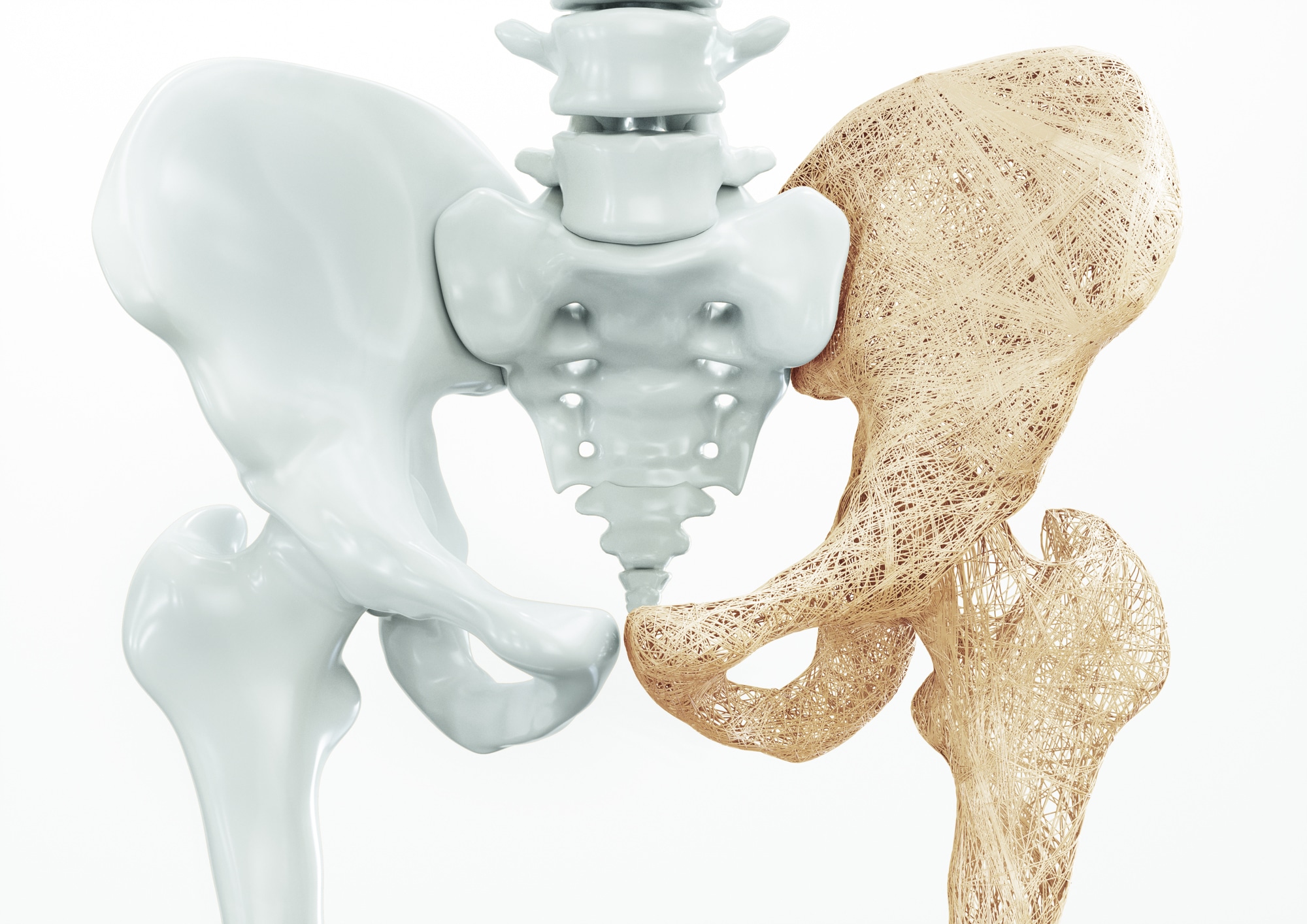
Image Credit: Bettersize Instruments Ltd.
One of the critical methods used to enhance the mechanical properties is by using high-purity and ultra-fine inorganic non-metallic powder as raw materials. This helps improve the microstructure of ceramic products.1
The particle size distribution (PSD) of the ceramic powder plays an essential role in green density, green strength, and shrinkage, and it also impacts the performance of final products. Therefore, for ceramic product manufacturers or ceramic powder producers, accurately managing the PSD is vital for quality control.
Listed below are the difficulties and needs for quality control of ceramic powder:
- During the production of ceramic powder, a product should be regularly sampled and detected from lines to ensure quality stability and save the measurement data for traceability. As a result of the huge numbers of samples, particle size measurement is laborious and repetitive work, increasing quality control costs.
- Adapting the PSD by integrating the finer and coarser powder in a few proportions is a common technique to increase the green density. The evenness of mixed powder determines the sintering success. A possible technique is required to track uniformity.
- The particle size of ultra-fine ceramic powder seems to be in the submicron scale. The conventional PSD measurement method, such as sieving, has not been possible for quantifying such fine powder. For laser diffraction technology (LD), there are also difficulties regarding the analyzers’ performances.
- For the calcination and desiccation of ceramic powder to be performed, the fine ceramic particles are subjected to agglomerate. The presence of small amounts of oversized particles always turns out to be defects of products and decreases the product qualification rate. Determining them prior to use is crucial to quality control. However, as the LD method does exhibit the images of oversized particles, it is questionable if they really exist.
- The Bettersizer S3 Plus combines laser diffraction and dynamic image analysis with the help of a single instrument. The laser diffraction system provides high precision, resolution, and sensitivity for submicron-scale particle measurements.
The dynamic imaging system exhibits the potential to visualize the dispersion process, capture images of oversized particles, and offer shape information to help users to analyze what actually happens to their powder products.

Figure 1. The Bettersizer S3 Plus, and BT-A60 autosampler. Image Credit: Bettersize Instruments Ltd.
Case study 1: Measuring the PSD of alumina powder samples automatically
A study of nearly 60 alumina powder samples (five alumina powders with various PSDs, alumina A~E, and each alumina powder was split into 12 samples) was performed. This was measured automatically in a single run by the Bettersizer S3 Plus and BT-A60 autosampler.
The BT-A60 is a high-throughput autosampler compatible with the Bettersizer S3 Plus. It can provide completely automated sample analysis. Before performing measurements, the 60 powder samples were dispersed in an ultrasonic manner in aqueous solutions collectively with sodium metaphosphate in almost 60 sample tubes.
Every tube was united with the help of a bar code related to an SOP edited in advance and additionally saved in the software. When the measurement commences, the working method is:
- The BT-A60 scans the bar code, determines the sample, and then selects the SOP
- The BT-A60’s sampling needle helps withdraw the suspension in the sample tube and further injects it into the dispersion pool, and then performs the measurement
- The sampling needle has been cleaned ultrasonically and proceeds to the next measurement

Figure 2. The D10, D50 and D90 of the 60 samples (unit: um). Image Credit: Bettersize Instruments Ltd.
Figure 2 exhibits the D10, D50, and D90 of the 60 alumina powders. Before extracting the suspension from sample tubes, to keep the suspension uniform, suction and injection were automatically performed several times with the sampling needle.
Good reproducibility has been exhibited by the 12 samples of every alumina powder. The PSD outcome of every measurement was automatically saved in the software.
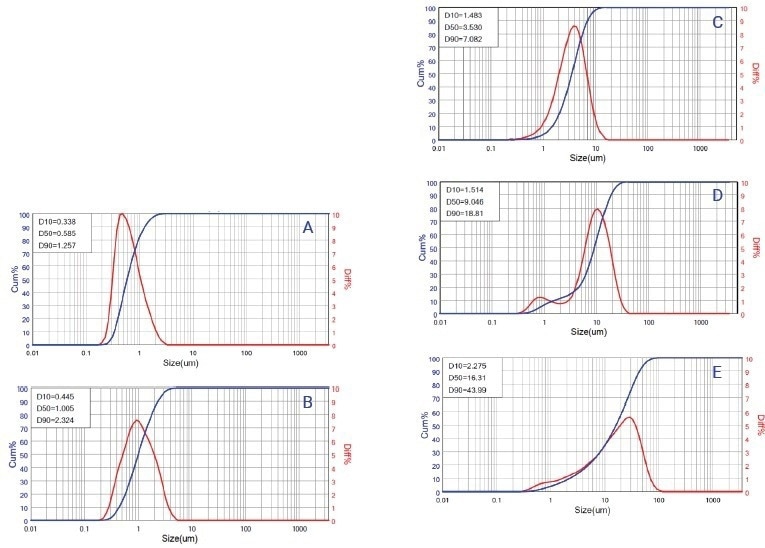
Figure 3. The PSD and cumulative curves of sample A, B, C, D, and E. Image Credit: Bettersize Instruments Ltd.
Figure 3 exhibits the PSD and cumulative curves of five alumina powders. Alumina A, B, and C have relatively narrower mono distribution and alumina D consists of a broader bimodal distribution. The several shapes of PSD curves indicate their different preparation and processing techniques.
Table 1. The PSD of sample E. Source: Bettersize Instruments Ltd.

As a result of the defects formed frequently by the coarse particles, the content of the coarse particles present in fine powder is a crucial indicator. Most coarse particles could be removed with correct processing methods, such as milling and sieving. The raw material used is Alumina E, which has not been sieved and milled.
According to the cumulative content displayed in Table 1, the volume percentage of particles more than 45 μm in sample E is almost 9%. The usage of the Bettersizer S3 Plus and BT-A60 autosampler provides a highly automatic and comfortable method for particle size measurements of big numbers of samples.
Case study 2: Determining the uniformity of alumina powder
The poor uniformity of the ceramic powder is responsible for the low mechanical strength and non-uniform microstructure of the products. Numerous methods and mixers have been developed for perfect mixing uniformity. Simultaneously, determining a simple technique to track the mixing effect is also vital for quality control.
In this case study, two mixed ceramic powders were measured. All of them were produced by mixing a coarser alumina powder (D50 is about 3.0 um) and a finer alumina powder (D50 is about 0.5 um). The change was that one was mixed by the wet method (with water), and one was mixed using the dry method (without water).
Prior to measurement, every mixed powder was sampled five times at various spots. The Bettersizer S3 Plus and BT-803 wet dispersion unit were utilized to quantify the particle size distribution of the 10 samples.
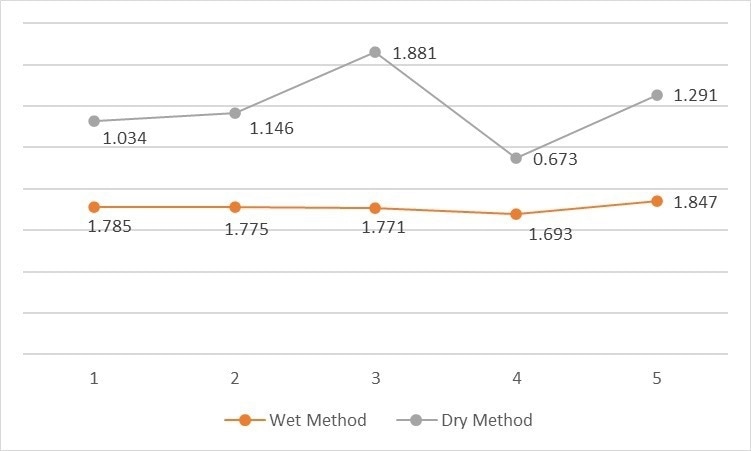
Figure 4. The D50 (µm) of the mixed alumina powders. Image Credit: Bettersize Instruments Ltd.
The D50 of every sample of the mixed powders has been exhibited in Figure 4. The D50 of the sample mixed by dry method displays a severe fluctuation. This indicates that the proportions of the finer and the coarser particles have a huge difference. The D50s of the wet mixed sample are highly consistent, denoting the fact that it has good uniformity.
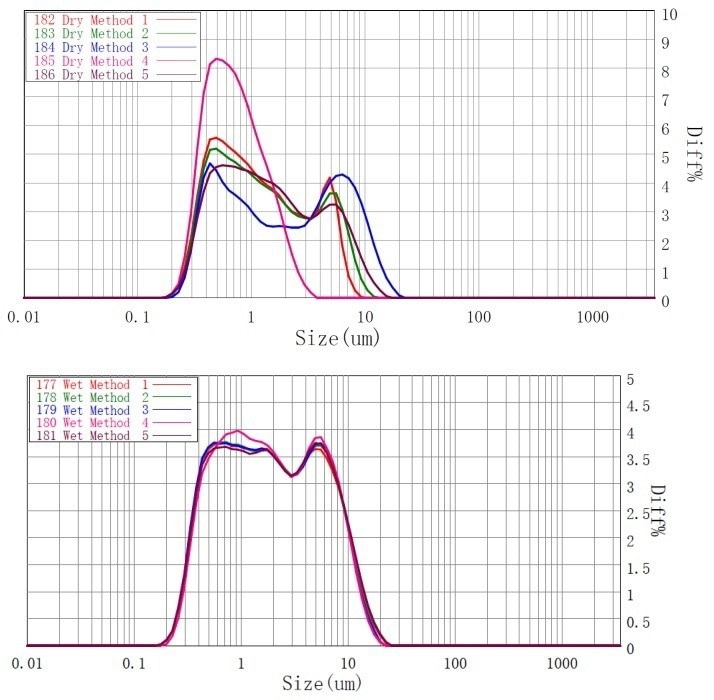
Figure 5. The PDS curves of the dry mixed alumina powder and wet mixed alumina powder. Image Credit: Bettersize Instruments Ltd.
In Figure 5, from the PSD curves shown, it can be observed that the reproducibility of the dry mixed powder is poor. The dry mixed sample 3 comprises more big particles than the other samples, whereas sample 4 has small particles.
Good consistency has been displayed by the PSD curves of the wet mixed powder. The excellent reproducibility denotes that the wet method might be highly suitable for blending such fine ceramic powders.
Case study 3: The detection of alumina agglomerates
The presence of surprisingly oversized particles in fine ceramic powder frequently denotes the degradation of quality and changes of manufacture and processing conditions. When oversized particles appear unpredictably on the PSD curve, confirming their presence of them is significant.
In this context, the dynamic imaging system of the Bettersizer S3 Plus has made use of the detection of the agglomerates present in the ultrafine alumina powder to offer the images and shape information involved for analysis.
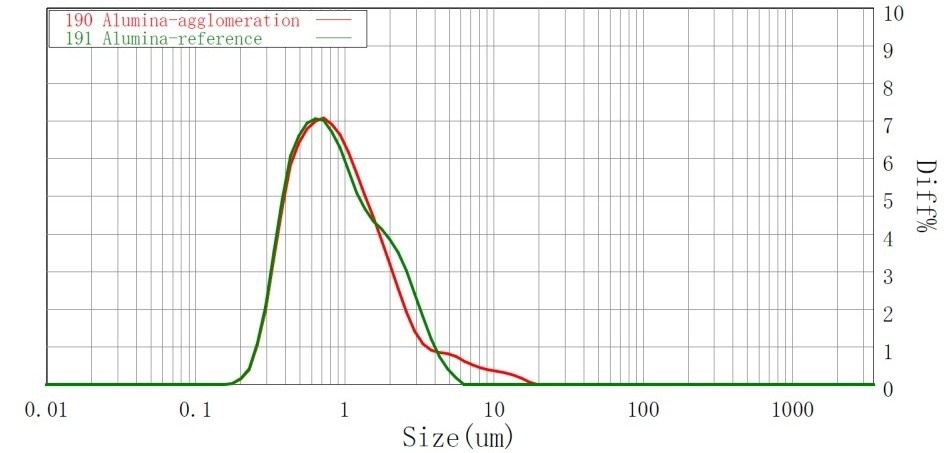
Figure 6. The PSD curves of Alumina powder. Image Credit: Bettersize Instruments Ltd.
Figure 6 shows the PSD curves of two batches of alumina powder with a similar model. In comparison to the reference batch, there are few oversized particles in the range of 6 um to 20 μm in the abnormal batch.
At the time of the production process, it may be attributable to the agglomeration of ultra-fine alumina particles. To ensure that the agglomerates are present, the measurement parameter was fixed to capture the particles varying from 6 μm to 20 μm.

Figure 7. The images of oversized particles. Image Credit: Bettersize Instruments Ltd.
The capturing of the images of oversized particles (displayed in Figure 7) was carried out by high-speed CCD cameras. Through the image analysis, the particle diameters were offered (the numbers above the images). Using the captured images, the presence of the oversized particles is verified.
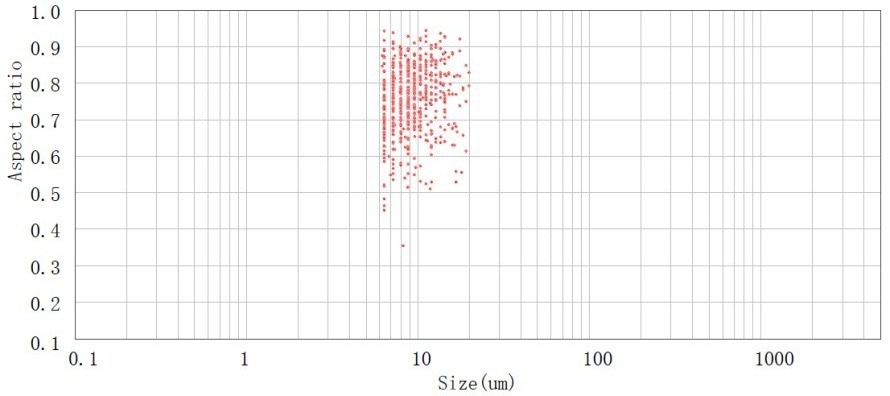
Figure 8. The scatter plot of particles in the range of 6~20 µm. Image Credit: Bettersize Instruments Ltd.
The particles present in the range of 6~20 μm were shown in the scatter plot, displayed in Figure 8. Combining the images and the scatter plot of the aspect ratio, it is possible to determine that the abnormal PSD curve has been caused due to the amounts of irregular alumina agglomerates.
The appearance of agglomerates might display that there are a few volatile factors in the manufacturing process, which need to be checked and enhanced.
Conclusion
The Bettersizer S3 Plus and BT-A60 autosampler provide ceramic powder producers and ceramic product manufacturers with a highly automatic and efficient technique for quantifying large numbers of samples.
The high performances and the combination of dynamic image analysis ensure the Bettersizer S3 Plus is a reliable and powerful tool for quality control during any process of ceramic production.
Reference
- T. A. Otitoju, P. U. Okoye, G. Chen, Y. Li, M. O. Okoye, and S. Li, Advanced Ceramic Components: Materials, Fabrication, and Applications, Journal of Industrial and Engineering Chemistry, 2020, Volume 85, 34-65.
About Bettersize Instruments Ltd.

With over 25 years experience developing and manufacturing particle characterization instruments, Bettersize has introduced breakthrough technology in the field of particle size & shape measurement.
By achieving high quality and superior performance, our instruments provide precise analysis results of particle size, particle shape, and powder characteristics, helping scientists and engineers to understand material properties, facilitate research and improve production efficiency.
Bettersize product line for particle size and shape analysis includes instruments of all needs and budgets, from basic to advanced research models. These instruments are widely applied in Pharmaceuticals, Battery materials, Mining and minerals, Metals, Chemicals and Surface coatings, measuring materials with size ranges from nanometer to millimeter.
Focused on technology innovation, instruments manufacturing, application support and after-sales services, Bettersize provides expertise and professional solutions and assures customers the highest confidence in our products.
Sponsored Content Policy: News-Medical.net publishes articles and related content that may be derived from sources where we have existing commercial relationships, provided such content adds value to the core editorial ethos of News-Medical.Net which is to educate and inform site visitors interested in medical research, science, medical devices and treatments.